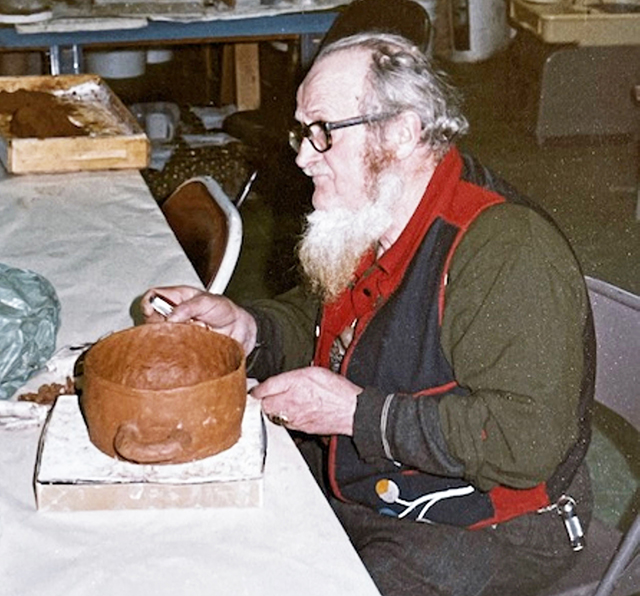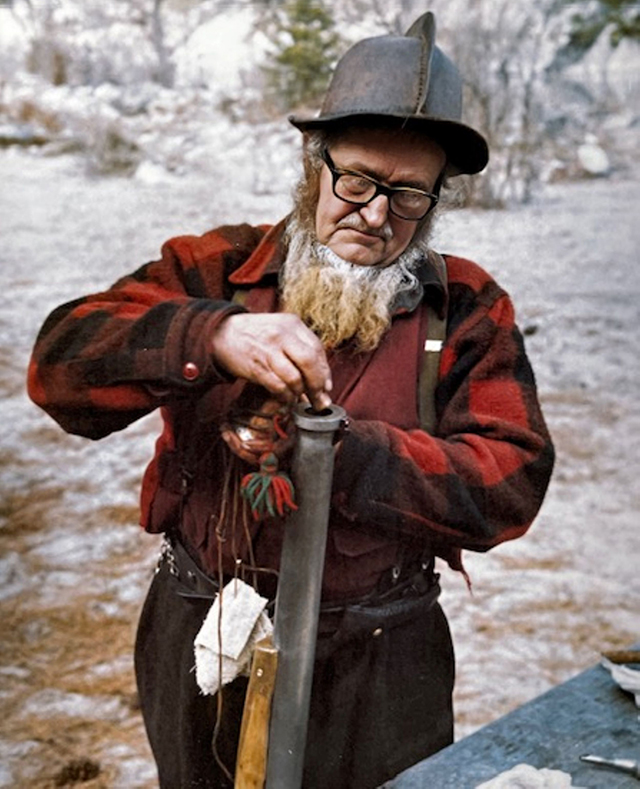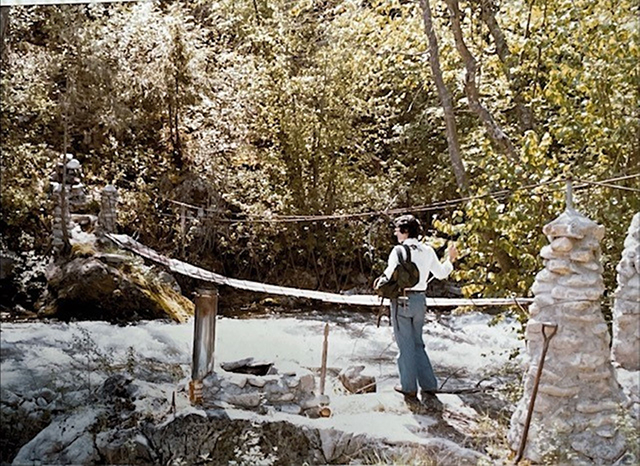Friendships: the Koehlers and Buckskin Bill By Carla Wilkins, Museum Director Living in Indiana in 1972, Steve Koehler read Harold Peterson’s book The Last of the Mountain Men: The True Story of an Idaho Solitary.
Inspired by the tale, Koehler felt an immediate urge to meet Sylvan
Ambrose Hart, known as “Buckskin Bill.” This desire led to a remarkable
friendship that spanned nearly a decade and left a legacy in the form
of a trove of photos for the Historical Museum.That August, Steve and his wife Grace made their way to Buckskin Bill’s compound in Idaho. Their first stay was in what Buckskin referred to as his “castle”—a three-story fort with only the first level completed at the time. The third story that was eventually built was so small the guard on duty had to stay awake – being unable to sit down. During this initial visit, the Koehlers captured a series of intriguing photos. These included Buckskin with his pickled cougar fetuses, his distinctive gun and leather hat, and even one showing him making tea in his handmade copper samovar. Another memorable snapshot featured a river rafter wearing a bearskin hat and skirt that Buckskin had crafted. Eager to experience life at the compound during winter, the Koehlers returned a few months later. Buckskin’s nephew, Rodney Cox, had constructed a newer home at the compound, invited Steve, a geologist by profession, to explore and assess the old J. R. Painter mine ruins near Buckskin’s home. Some of the leftover copper from the mine’s mill had been scavenged by Buckskin to craft his samovar and other utensils. The following spring, Buckskin demonstrated how to shoot his 1¼” caliber cap and ball muzzleloader, which now hangs in the museum. Buckskin cast all his own balls after making a mold. A piece of shoestring in each ball served as a stabilizer, which improved the smoothbore gun’s accuracy. Using 150 grains of black powder, with sandbags to support the weapon’s weight, Buckskin fired the gun during the Koehlers’ visit. A 5-gallon metal can filled with water was ripped wide open as if it had been a sheet of paper. Photos of the gun’s loading, firing and cleaning event are now part of the Buckskin Bill exhibit. On another occasion, the Koehlers crossed a log footbridge over Five Mile Creek, which Buckskin had built. Unfortunately, the bridge broke during high water while they were on the opposite side of the creek, adding a bit of unexpected adventure to their visit. To get back across, they took turns securing themselves through their belts to a pulley on a steel cable that had served as a handrail for the collapsed bridge. Rodney then pulled them across with a rope attached to the pulley, while the roaring creek rushed beneath them. Buckskin later built a suspension bridge across the creek. Grace Koehler, a fourth-grade teacher, invited Buckskin to her classroom to share his life story with her students. This marked the beginning of several educational visits Buckskin made to schools in Grangeville and Cottonwood. In the fall of 1974, Buckskin accompanied Grace on a visit to the Grangeville Art Gallery, where they tried their hand at making pottery. The last time the Koehlers saw Buckskin was in mid-April 1980. Intrigued by the rumblings of Mt. St. Helens, Steve and Grace picked up Buckskin for a road trip to see the volcano. Just two weeks after this memorable journey, Buckskin passed away from a heart attack at the age of 73. Rodney Cox led the burial service, where Steve helped shovel dirt into the grave at the edge of Buckskin’s garden. The friendship between the Koehlers and Buckskin Bill serves as a fascinating chapter in the history of Idaho. The photos and memories they shared will enrich our museum’s collection for years to come.  Buckskin Bill making pottery.  Buckskin Bill loading a muzzleloader. Photos above submitted by Historical Museum at St. Gertrude.  Suspension bridge built by Buckskin Bill. Photo provided by Historical Museum.  Grace Koehler in front of Buckskin Bill’s unfinished castle. Photo submitted by Historical Museum at St. Gertrude. |